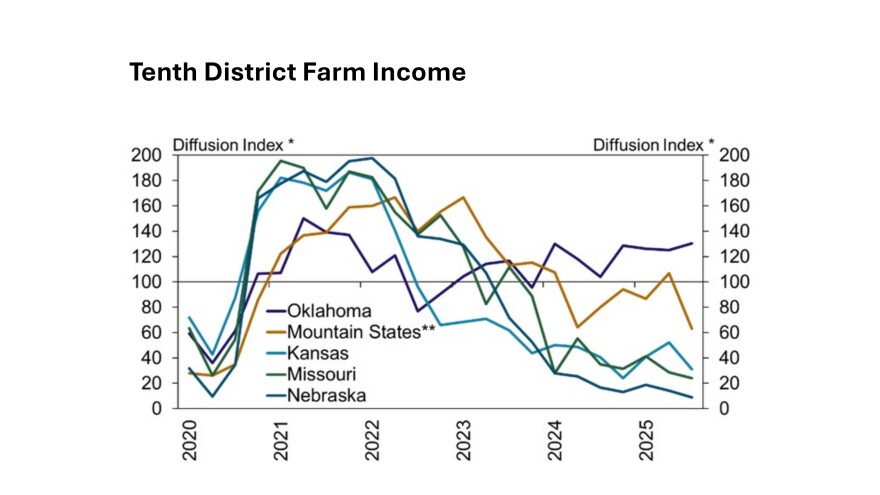Agriculture credit conditions in states more reliant on crops have steadily weakened as summer turned to fall, but the beef industry is telling a different story.
Despite a tightening ag economy, the finances in areas more dependent on cattle generally remained stable, and lenders in those areas reported higher incomes and steady loan quality in the Kansas City Federal Reserve's Agricultural Credit Survey.
The survey is a report to help take the temperature of the ag economy. It includes Oklahoma, Kansas, Missouri, Nebraska and mountain states such as Colorado, northern New Mexico and Wyoming.
"Weakness in the crop sector continued to weigh on the outlook for the U.S. farm economy despite a boost to incomes in some regions from strength in the livestock sector and recent increases in corn and soybean prices," according to the survey.
With reduced working capital and higher production costs, the survey shows greater demand for financing, and farm debt growth is staying strong among ag lenders. The distribution of assistance from the American Relief Act, which producers had eagerly awaited earlier this year, provided modest support, according to the report.
Economists note somewhat weak crop prices have hit farm incomes. Economists note that although Oklahoma's farm income was low compared to its northern neighbors in recent years, the state is now seeing a higher income than one year ago, while crop-heavy states are seeing a dip.

For the beef industry, it's a tale of supply and demand – and a series of rough droughts shrinking overall cattle numbers.
Beef prices are at a record-high because the nation's cattle herd is the smallest it's been in decades and demand for beef at the grocery store remains strong, causing supplies to tighten as producers sell more cattle.
Producers say they still face challenges like inflation and high input costs, but they are seeing profits for the first time in years.
Although Oklahoma is more dependent on beef revenue, there are plenty of producers growing crops as well. And crops are weathering something different.
Tariff tensions and rising input costs have left producers feeling squeezed. Purdue University's Ag Economy Barometer shows poor profit margins have left crop producers with a more pessimistic view of the situation on their operations.
Farmers expect weaker financial performance than a year ago, according to the barometer.
This report was produced by the Oklahoma Public Media Exchange, a collaboration of public media organizations. Help support collaborative journalism by donating at the link at the top of this webpage.









